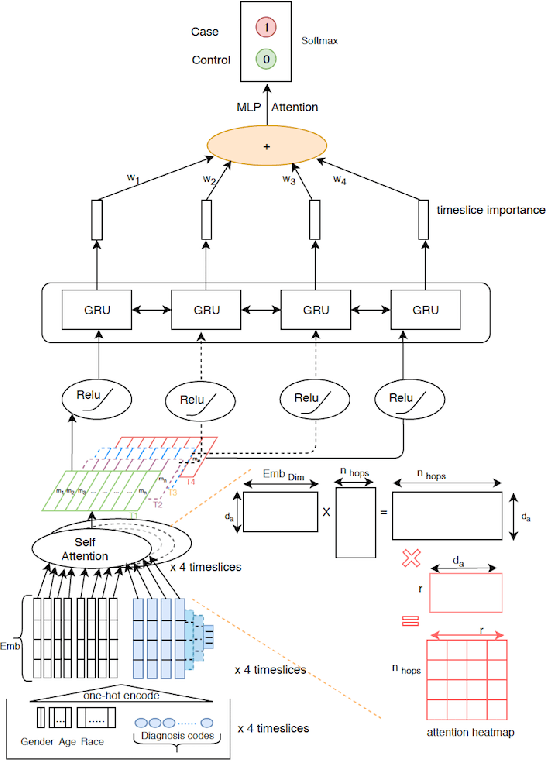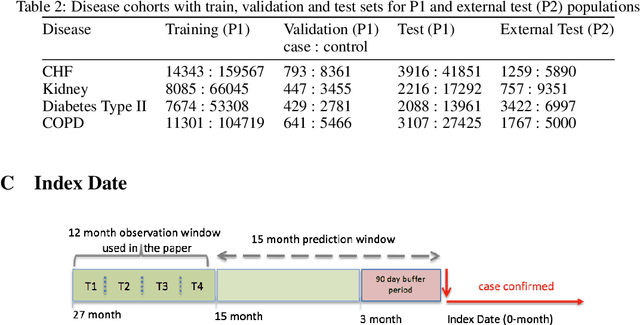Marc Overhage
SAVEHR: Self Attention Vector Representations for EHR based Personalized Chronic Disease Onset Prediction and Interpretability
Nov 13, 2019



Abstract:Chronic disease progression is emerging as an important area of investment for healthcare providers. As the quantity and richness of available clinical data continue to increase along with advances in machine learning, there is great potential to advance our approaches to caring for patients. An ideal approach to this problem should generate good performance on at least three axes namely, a) perform across many clinical conditions without requiring deep clinical expertise or extensive data scientist effort, b) generalization across populations, and c) be explainable (model interpretability). We present SAVEHR, a self-attention based architecture on heterogeneous structured EHR data that achieves $>$ 0.51 AUC-PR and $>$ 0.87 AUC-ROC gains on predicting the onset of four clinical conditions (CHF, Kidney Failure, Diabetes and COPD) 15-months in advance, and transfers with high performance onto a new population. We demonstrate that SAVEHR model performs superior to ten baselines on all three axes stated formerly.
Effectiveness of LSTMs in Predicting Congestive Heart Failure Onset
Feb 13, 2019



Abstract:In this paper we present a Recurrent neural networks (RNN) based architecture that achieves an AUCROC of 0.9147 for predicting the onset of Congestive Heart Failure (CHF) 15 months in advance using a 12-month observation window on a large cohort of 216,394 patients. We believe this to be the largest study in CHF onset prediction with respect to the number of CHF case patients in the cohort and the test set (3,332 CHF patients) on which the AUC metrics are reported. We explore the extent to which LSTM (Long Short Term Memory) based model, a variant of RNNs, can accurately predict the onset of CHF when compared to known linear baselines like Logistic Regression, Random Forests and deep learning based models such as Multi-Layer Perceptron and Convolutional Neural Networks. We utilize demographics, medical diagnosis and procedure data from 21,405 CHF and 194,989 control patients to as our features. We describe our feature embedding strategy for medical diagnosis codes that accommodates the sparse, irregular, longitudinal, and high-dimensional characteristics of EHR data. We empirically show that LSTMs can capture the longitudinal aspects of EHR data better than the proposed baselines. As an attempt to interpret the model, we present a temporal data analysis-based technique on false positives to attribute feature importance. A model capable of predicting the onset of congestive heart failure months in the future with this level of accuracy and precision can support efforts of practitioners to implement risk factor reduction strategies and researchers to begin to systematically evaluate interventions to potentially delay or avert development of the disease with high mortality, morbidity and significant costs.
 Add to Chrome
Add to Chrome Add to Firefox
Add to Firefox Add to Edge
Add to Edge